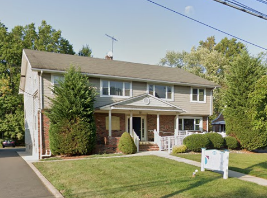
- Physicians
- Locations
- Conditions
- Conditions Overview
- Abdominal Bloating
- Anorectal and Pelvic Floor Dysfunction
- Bloody Stool
- Celiac Disease & Gluten Sensitivity
- Colorectal Cancers
- Constipation
- Diarrhea
- Diverticulitis
- Esophageal Cancer
- Fatty Liver Disease
- Fecal Incontinence
- Gallstones
- GERD/Acid Reflux
- Hemorrhoids
- Inflammatory Bowel Disease
- Irritable Bowel Syndrome
- Malabsorption
- Polyps
- Rectal Bleeding
- Ulcers
- Procedures
- Procedures Prep
- Procedure Prep Overview
- Colonoscopy
- Alternative Colonoscopy Preparation
- Abdominal Ultrasound Preparation
- Anal Manometry
- Breath Tests
- Capsule Endoscopy
- Endoscopic Ultrasound
- Flexible Sigmoidoscopy
- H. Pylori Breath Test
- Liver Biopsy Preparation
- Therapeutic ERC
- Upper Endoscopy (EGD)
- Instrucciones en Español
- Patient Center
- Blog
- Telehealth

Anorectal and Pelvic Floor Dysfunction
View All ConditionsWhat are Anorectal and Pelvic Floor Dysfunction?
Anorectal dysfunction is a term used to describe a set of disorders that result from pelvic floor dysfunction. Pelvic floor dysfunction arises when the muscles that support and control the bladder and bowel (as well as the uterus in women) become weakened. As a result, anorectal conditions such as fecal incontinence and constipation occur. Urinary and gynecological disorders can also appear, and may be treated by a urologist or a gynecologist, respectively.
Causes of Pelvic Floor Dysfunction
Common causes of pelvic floor dysfunction include:
- Chronic coughing
- Deterioration of muscle strength due to aging
- Excessive straining due to chronic constipation
- Heavy lifting
- Obesity
- Pelvic surgery or radiation treatments
- Pregnancy and childbirth
- Trauma to the pelvic region
Symptoms of Pelvic Floor Dysfunction
Symptoms may include:
- A bulge or heavy sensation in the rectum or vagina
- Constipation, pain or a need to strain during bowel movements
- Muscle spasms in the pelvis
- Pain or pressure in the rectum or vagina
- Urinary or fecal incontinence (loss of bladder or bowel control)
How is Pelvic Floor Dysfunction Diagnosed?
Pelvic floor dysfunction is often diagnosed through a review of your symptoms and medical history, as well as a physical examination.
How Are Anorectal and Pelvic Floor Dysfunction Treated in NJ?
In the majority of cases, anorectal dysfunction—as well as overall pelvic floor dysfunction—can be successfully treated without surgical intervention. Treatments may include:
- Behavioral changes: Avoid pushing or straining when having a bowel movement. Learn how to relax and control the muscles through exercises. These are behavioral changes a physician might recommend
- Medication: A low dose muscle relaxant may be prescribed to help relieve conditions, such as constipation
- Surgery: Surgery may be considered if the rectum prolapses. A rectal prolapse occurs when the tissues which line the rectum fall into the anal opening. Rectal prolapse is typically the result of excessive straining over time to pass stool
Treatment for Anorectal and Pelvic Floor Dysfunction in NJ from DHC
Symptoms of pelvic floor dysfunction can be uncomfortable and disruptive to your everyday life, and we want to take the steps needed to get you back to living your healthiest life. At Digestive Healthcare Center, we will work with you to develop a personalized treatment plan with your unique situation in mind. We are proud to provide comprehensive gastroenterology care in Hillsborough, Somerville, and Warren. If you can’t make it to the office, you can discuss your symptoms with one of our gastroenterologists via a telemedicine virtual visit.
Digestive Health Care and Treatment in New Jersey
We want to help you put your digestive health first! Please contact us today to schedule an appointment at one of our three gastroenterology centers in NJ. We are proud to provide a wide range of gastroenterology tests and procedures to promote positive digestive health for men and women in NJ.























